Smart plumbing technology provides great improvements in a variety of aspects of plumbing management. In decades past, property owners relied on their personal observations and their water bills to get a sense for their water usage and efficiency. Smart systems can automate many of the monitoring tasks, allowing plumbers to assess a system and quickly Read more
tankless water heaters
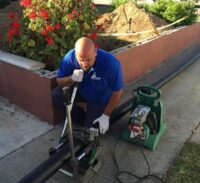
Smart plumbing technology provides great improvements in a variety of aspects of plumbing management. In decades past, property owners relied on their personal observations and their water bills to get a sense for their water usage and efficiency. Smart systems can automate many of the monitoring tasks, allowing plumbers to assess a system and quickly form an effective plan for maintenance or repair. With these tools, property owners can improve their efficiency, reduce water consumption and minimize the effects of water damage.
Leak Detection
Smart plumbing systems offer the latest in leak detection technology. Sensors can track multiple factors, including water pressure, volume, temperature, humidity, the presence of intrusions and more. When integrated with a smart plumbing system, the sensors can alert property owners to the existence of a leak as soon as it arises. Because the sensors are spread throughout the system, property owners can get detailed information about the location of the leak, helping plumbers to find and address the leak more quickly.
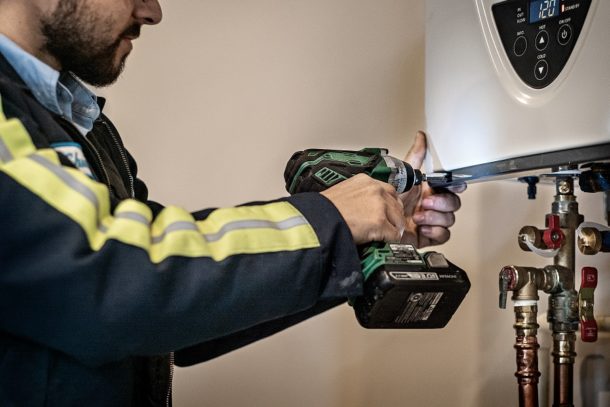
Efficient Water Heaters
Along with other devices in the Internet of Things, smart water heaters help property owners to control their hot water usage and efficiency. A smart water heater often uses less energy by allowing users to set limits on their water consumption. The smart system can adapt demand by tracking household usage data to help minimize energy consumption when residents use it the least. Additionally, a smart water heater offers remote operation, leak detection and system alerts, so that owners can turn off the system or discover problems before they lead to serious water damage.
Irrigation Systems
The advancement of smart irrigation systems allows property owners to minimize their water consumption based on weather patterns, without compromising the quality and health of the landscaping. Smart sprinkler controllers make it easy for property owners to control the property’s watering schedule by a smartphone or tablet. Capability of individual controllers depends on the equipment. Owners who buy sensors may be able to have the system automatically adjust watering based on moisture levels. Without these tools, smart controllers use data about local temperatures and precipitation to estimate the best watering schedule.
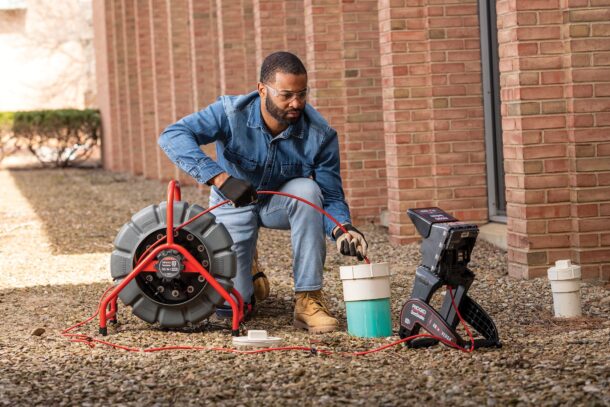
Smart Sewer Cameras
In recent years, plumbers have used closed-circuit television cameras to identify the location of leaks or damaged pipes as part of plumbing repair. The cameras provide an opportunity for plumbers to inspect or assess the condition of the interior pipes without having to dig up the landscaping first. Smart technology can make this task more effective. Smart cameras provide intelligent metering, so that plumbers know how approximately where the problem sits in the plumbing, without having to use a manual cabling system. Smart systems can also provide other data to assist in the diagnostic process.
AI Defect Prediction
Finding defects in existing pipes is not new technology, but the software to predict it is on the cutting edge. Pattern recognition is a significant advantage of artificial intelligence technology, and plumbers can use it to determine the most likely spots for a leak or burst pipe. New software options take existing camera footage of sewer inspections and use that data to create detailed maps of a plumbing system. This technology can help plumbers decide where to look first or target their maintenance work to the areas with the greatest need.
Due to its location, plumbing presents a number of obstacles for repairs and upkeep. Smart technology is revolutionizing the plumbing industry with tools and systems that can improve efficiency and simplify the process of finding defects or problems. Smart tools provide useful data to plumbers, so that they can find a leak faster. Smart systems also alert owners to the presence of problems, such as low water pressure or high water usage. By using these tools, owners can reduce the likelihood of unexpected water bills or property damage.
 Author bio: Kareem Haddad is the owner of Absolute Rooter & Plumbing, a family-owned and operated company that has been improving the plumbing systems of Orange County and surrounding areas since 2010.
Author bio: Kareem Haddad is the owner of Absolute Rooter & Plumbing, a family-owned and operated company that has been improving the plumbing systems of Orange County and surrounding areas since 2010.

Rinnai America Corporation, a leading manufacturer of tankless water heaters in North America, announced today that Paul Nick has joined the company, and its Executive Leadership Team, as Vice President of Product and Marketing. The newly created position will lead the organization’s Product Management and Marketing teams and will support its growth goals of expanding Read more
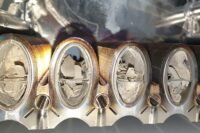
… what is the level of scale in your water? Hard to say, I’d imagine. But, over time, believe me, you’ll know. Scale, also known as limescale, refers to mineral buildup—primarily magnesium and calcium—that creates a white, chalky-like substance that can accumulate on the plumbing system’s internal components, including water heaters, pipes, and fixtures, says Read more
… what is the level of scale in your water? Hard to say, I’d imagine. But, over time, believe me, you’ll know. Scale, also known as limescale, refers to mineral buildup—primarily magnesium and calcium—that creates a white, chalky-like substance that can accumulate on the plumbing system’s internal components, including water heaters, pipes, and fixtures, says Randall Oshiro, Lead Engineer, Noritz America.
In other words, “Common in household water, especially in areas with hard water, scale is essentially the crusty stuff you sometimes see on old pipes or the heating element of an old kettle,” says Ben Tate, National Sales Manager—Water Treatment, Navien, Inc. “When water is heated, these minerals crystallize and stick to surfaces such as the interiors of pipes, boilers, and heaters, forming a hard, insulating layer. It’s a natural process, but not exactly a welcome one, as it hampers the efficiency of any appliance it settles in.”
Scale’s Geography
Scale’s prevalence comes down to the geological makeup of the land through which your water travels. Water is a universal solvent, and as it moves through soil and rock, it picks up minerals like calcium and magnesium. In areas rich in limestone and other calcareous rocks, which are composed mainly of calcium carbonate, water tends to carry a higher load of these minerals. Consequently, regions with such geological features—think of areas like Texas and Florida—often struggle more with hard water and, by extension, scale.
Calcium and magnesium are naturally occurring minerals, says Oshiro. Depending on where the water is drawn from, water flowing through ground sources that contain high concentrations of these minerals will absorb some of the minerals. For example, water drawn from an aquifer with a high concentration of limestone will inevitably have a high concentration of lime (calcium). Like the previous example, areas where water is drawn from underground are often where the highest concentration of hard water exists.
A Water Heater’s Nemesis
Yet the “damage” scale can bring can’t be overstated, says Dan Giosia, Assistant Product Manager, Bradford White Corporation, “The accumulation of scale in a water heating system diminishes the overall performance, efficiency, and lifespan of the water heater unless preventative maintenance measures are implemented.”
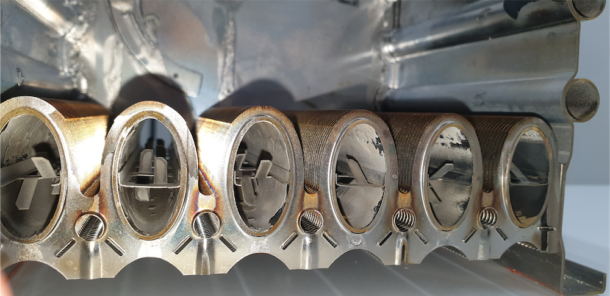
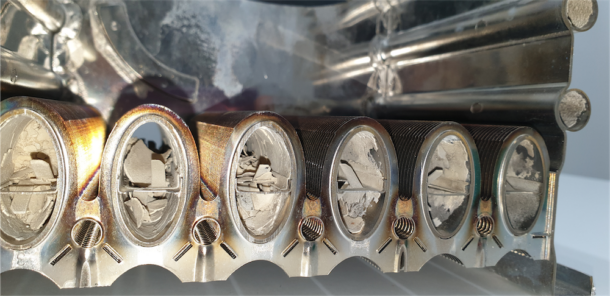
Scale poses a triple threat to water heating systems, says Tate. First, it’s an insulator. In a domain where efficient heat transfer is key, scale is a formidable barrier that keeps heat from doing its job effectively, which can drive up energy costs as your system struggles to keep up. Second, scale buildup increases the pressure in water lines and heating chambers, which can lead to leaks or mechanical failures. Lastly, the more energy and repairs a system requires, the more its lifespan diminishes. That’s why preventing scale isn’t just about maintaining water flow; it’s about saving money and extending the life of your equipment.
According to Oshiro, the primary danger of this scale formation is that it can accumulate inside the water heater (on the heat exchanger of tankless water heaters, along electrical heating elements, or along the internal flue of gas storage water heaters). This scale formation acts as an insulator in large amounts, preventing the proper heat exchange between the water and the heating source. “When this happens, the temperature will increase—as heat is not being drawn away at the designed rate—leading to increased thermal stress and decreased longevity of the internal components. Additionally, this buildup can reduce the surface area of piping, which can reduce the flow performance of the fixtures as well,” says Oshiro.
Tankless Magnified
Scale impacts both tank-type and tankless water heaters, though it manifests differently in each system, says Tate. In tank-type heaters, scale settles at the bottom of the tank, reducing heat transfer efficiency and leading to increased energy consumption and potential corrosion. Over time, this can significantly shorten the lifespan of the heater. Conversely, tankless models, which heat water directly, experience scale buildup directly on their heat exchangers. This can decrease heating efficiency and disrupt water flow, though it does not necessarily indicate a greater susceptibility to scale than tank-type heaters.
Regardless of the system type, the key to mitigating scale effects lies in regular maintenance. Both tank-type and tankless water heaters benefit from routine descaling and the proactive use of water treatment solutions like water softeners or scale inhibitors. Properly maintained, both systems can handle scale effectively, ensuring efficient operation and extending the lifespan of the heater. Thus, neither system is disadvantaged by scale when properly cared for, allowing users to choose based on their specific needs and preferences.
The reality is the mechanism/issue is about the same for both types of technology. “However, it will present itself much sooner/more apparently with a tankless type water heater than a tank-type water heater. The reason for this is basically that the pipes are smaller. Imagine a ¾” pipe and 24” round storage vessel. The smaller pipe, with a ¼” of scale buildup, loses significantly more of its surface area in comparison. This means that issues like reduced flow will become more apparent sooner,” says Oshiro.
However, it should be noted, continues Oshiro, that this same amount of scale will have the same actual effect on the systems (reduced efficiency, higher thermal stress). As a result, a tankless water heater may show signs of decreased performance sooner; however, this also allows the customer to preemptively conduct maintenance to ensure that the product will last many times longer than a storage tank-type water heater.
The storage tank-type water heater often continues to build up this scale over time, resulting in lower efficiencies (meaning higher operating costs) and eventual failure sooner. This scale formation is one of the primary mechanisms by which water heaters will fail. 1

According to Bradford White’s Giosia, scale does pose a greater issue for tankless water heaters compared to tank-type water heaters due to their compact heat exchanger design. With a limited surface area and brief heating period, tankless heaters must rapidly elevate water temperatures, requiring high temperatures within the heat exchanger. As a result, scale tends to accumulate on this surface. If scale buildup becomes excessive, it can restrict water flow through the heat exchanger to the point of causing component or unit failure so it’s important for homeowners to contact their plumbing professional for regular maintenance.
In comparison to gas tank-type water heaters, electric tank-type heaters are generally more susceptible to scale buildup. This is primarily due to the very hot surfaces of electric heating elements, which have a small area and are prone to accumulating limescale within the tank. However, the impact of scale buildup is limited by the fact that electric heating elements are relatively inexpensive to replace, especially when compared to the cost of replacing a tankless gas heat exchanger or complete unit.
Gas tank-type water heaters may vary in susceptibility to scale buildup depending on their design. Units with a burner located outside the tank are typically less affected by scale compared to those with an internal heat exchanger where scale can accumulate.
Action Plan
What can contractors/homeowners do to “combat” scale? “The first step is to know your water supply,” says Oshiro. “Almost every municipal water supply company will annually publish a water quality report that will include data about the hardness of your water supply. This rating will often be rated on a scale of grains per gallon (gpg), parts per million (ppm), or milligrams per liter (mg/L). These ratings tell the density of mineral hardness (calcium) present in the water supply. The USGS[1] has a relative hardness indicator, where 61-120 mg/L (3.6-6 gpg) would be considered somewhat hard water.”
The best way to reduce scale is to treat the cause. This means using water treatment devices to prevent the calcium from building up in your water heater and piping. However, this isn’t always possible, so maintenance can be conducted by a descale flush: running a deliming agent (ex., vinegar or a specialized deliming agent) solution through piping the water heater to neutralize the calcium. As calcium is a basic material (pH >7), the acidic deliming agent will neutralize the calcium and remove buildup.
It’s also essential to adhere to the manufacturer’s recommendations for preventative maintenance, including specific procedures and frequency, for their product, advises Giosia.
Regular descaling of the water heater is often recommended to minimize scale buildup on the heat exchanger of a tankless water heater. The frequency of preventative maintenance typically depends on the characteristics of the water supply in your area, such as whether it is heating hard or soft water.
Installing a water softener can help reduce the hardness of the incoming water into both tankless and tank-type water heaters. However, it’s important to consult with a plumbing professional to ensure compatibility and to follow their recommendations.
Navien’s Tate says contractors and homeowners in these regions should adopt a proactive approach to water treatment. Installing a water softener is one effective strategy; it replaces hardness ions like calcium and magnesium with sodium or potassium, preventing them from forming scale. Additionally, I’d recommend considering scale prevention systems, which are designed to transform hardness minerals into harmless crystals that won’t stick to surfaces. Regular maintenance checks are also vital—they help ensure that any potential scale buildup is managed before it becomes a serious issue.
If you know that your water source is hard water, Oshiro suggests that you can take action to alleviate the risks.
- Develop a routine maintenance plan: This can be done by “descaling,” or flushing, your water heater regularly, depending on usage and quality. Asking your water heater manufacturer or installer for recommendations on frequency is a great first step.
- Treat the water: There are ways to eliminate (sequester or remove) hard-water minerals from the water source. These include items like water softeners, which use an ion-exchange process to physically remove free calcium from the water, or products that use a polyphosphate media to sequester the calcium to prevent it from coming out of the solution when heated.
Technology Tips
Is there newer technology that could make the equipment more scale-resistant? “Indeed,” says Tate. “One of the latest advancements in this area is Template Assisted Crystallization (TAC), which is a highly effective technology for preventing scale without the use of chemicals or salt. TAC systems work by transforming the calcium and magnesium minerals in hard water into stable, harmless crystal particles. These particles then flow through the system without sticking to surfaces, effectively preventing scale buildup. This technology is particularly useful for protecting high-efficiency tankless water heaters from scale, ensuring they operate at optimal efficiency while extending their lifespan.”
To some degree, says Oshiro, the selection of materials, design of the heat transfer surface, and the temperature in which the system operates, all have roles to play in controlling the amount of scale formation.
- Materials with less surface roughness provide less chance for scale particles to attach.
- Systems with lower temperature rises can also slightly reduce the formation rate of scale.
There is constant research into reducing the harmful effects of scale formation in water heating products, but at its core, it is a challenging situation to avoid entirely.
According to Giosia, some tankless water heater models incorporate technology aimed at enhancing scale resistance, such as scale reduction technology and replacement filtration cartridges. Moreover, water softeners can serve a similar purpose in mitigating scale buildup.
However, despite these advancements, maintenance remains essential for all tankless water heaters to prevent excessive scale accumulation. Regular upkeep is necessary to ensure optimal performance and longevity of the unit.
In conclusion, the timeline for significant damage can vary widely depending on the water’s hardness and the frequency of system maintenance. In regions with very hard water and minimal preventive measures, says Tate, significant scale buildup can occur within just a few months, leading to efficiency losses and potential system failures. Conversely, with proper management and regular maintenance, scale-related damage can often be staved off for years, preserving the efficiency and extending the life of the system.
1
https://www.usgs.gov/special-topics/water-science-school/science/hardness-water#:~:text=Measures%20of%20water%20hardness&text=General%20guidelines%20for%20classification%20of,mg%2FL%20as%20very%20hard
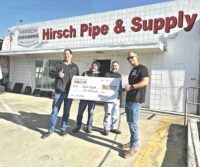
Tyler K. Pugh of All Coast Plumbing & Rooter (Tujunga, Calif.) is the winner of the $10,000 grand prize in Noritz America’s recently concluded Retrofit Rewards sweepstakes promotion for plumbing and HVAC contractors in the United States and Canada. Pugh received the winning Scratch & Win Card after purchasing a Noritz NRCR Residential Condensing Tankless Read more
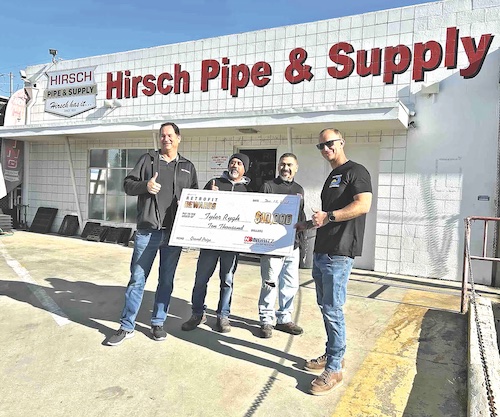
Tyler Rygh (far right) of All Coast Plumbing & Rooter accepts $10,000 grand prize in Noritz’s Retrofit Rewards promotion from Noritz SoCal Territory manager Dylan Stieler (far left), as sales specialists Robert Espadas (center, left) and Adolfo Sandoval of Hirsch Pipe & Supply look on. (Photo courtesy Noritz America).
Tyler K. Pugh of All Coast Plumbing & Rooter (Tujunga, Calif.) is the winner of the $10,000 grand prize in Noritz America’s recently concluded Retrofit Rewards sweepstakes promotion for plumbing and HVAC contractors in the United States and Canada. Pugh received the winning Scratch & Win Card after purchasing a Noritz NRCR Residential Condensing Tankless Water from wholesaler-distributor Hirsch Pipe & Supply at its branch operation in Santa Clarita, Calif.
Tyler Pugh owns All Coast Plumbing, a Southern California company that does residential and commercial work. Coming from a long line of plumbers, Tyler decided to obtain his license in 2017 before opening his company in the same year. His company principally serves the San Fernando Valley and its surrounding areas.
Prior to becoming a licensed plumber, Tyler had over 20 years of experience working as a tankless water heating installer. While he recommends many Noritz products to his clients, his favorite model is the NRCR111, which coincidentally was the winning product. “The NRCR is a favorite because of the size,” he explains. “I do a lot of remodeling and addition work. If I’m working on a project where the homeowner wants to add a bathroom, I know the Noritz models can handle the additional volume well,” Tyler says.
The promotion, which began on June 1, 2023, included select models in the Noritz EZ and NRCR tankless series available at supply houses across the United States. Professional plumbing and HVAC contractors were rewarded with a free Scratch & Win Card, providing them with two opportunities to win exciting prizes.
The first opportunity guaranteed a prize of Noritz branded merchandise or a discount code offering up to 25% off purchases from Noritz’s online support and parts store. In addition, contractors had the chance to win substantial cash prizes. Over 90 EZ and NRCR units carried a total of $72,500 in prize money. Among them, 50 models offered a $150 cash prize, 20 offered $500, another 20 offered $1,000, and five units offered $5,000. The highlight of the sweepstakes was the grand prize of $10,000, which was won by Tyler Pugh.
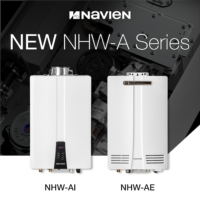
Irvine, Calif. — Navien has started shipping the new NHW-A non-condensing tankless water heater. NHW-A is available in two configurations: NHW-AI for interior installations and NHW-AE for exterior installations. Both the NHW-AI and NHW-AE are offered in 160,000 BTU/h, 180,000 BTU/h and 199,900 BTU/h sizes in either natural gas or liquid propane fuel operation. NHW-A Read more
Irvine, Calif. — Navien has started shipping the new NHW-A non-condensing tankless water heater. NHW-A is available in two configurations: NHW-AI for interior installations and NHW-AE for exterior installations. Both the NHW-AI and NHW-AE are offered in 160,000 BTU/h, 180,000 BTU/h and 199,900 BTU/h sizes in either natural gas or liquid propane fuel operation.
NHW-A is the first and only non-condensing tankless water heater to feature the patented ComfortFlow® recirculation pump and buffer tank originally introduced in the NPE-A condensing tankless water heater in 2012. ComfortFlow helps eliminate the “cold water sandwich” effect and resolves the issue of low flow rates found in other tankless water heaters.
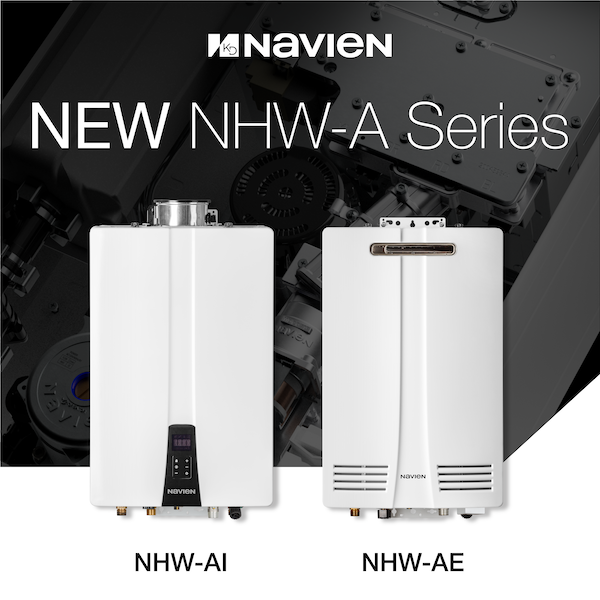
ComfortFlow also reduces the wait time for hot water by allowing internal or external recirculation without the need for external parts or controls. Users can program recirculation timing for either always-on, a set weekly schedule using the remote controller, or use the intelligent setting that learns the user’s hot water patterns and automatically adjusts the recirculation schedule to match.
“NHW-A with ComfortFlow brings high-efficiency water heating with built-in recirculation to more customers,” said Chia Lin, Water Heater Product Manager at Navien. “In the past, customers who were restricted to non-condensing products had to purchase expensive external pumps along with their tankless water heaters to achieve what the NHW-A now offers already built into the unit.”
Like the NPN, Navien’s first non-condensing product, the NHW-A utilizes the proprietary NaviTech® stainless steel heat exchanger and burner for extreme durability and low NOx emissions. The NHW-A will also utilize the 3-inch by 5-inch NaviVent® concentric venting materials that were originally launched with the NPN.
For more information about the NHW-A or any of Navien’s products, visit navieninc.com.
